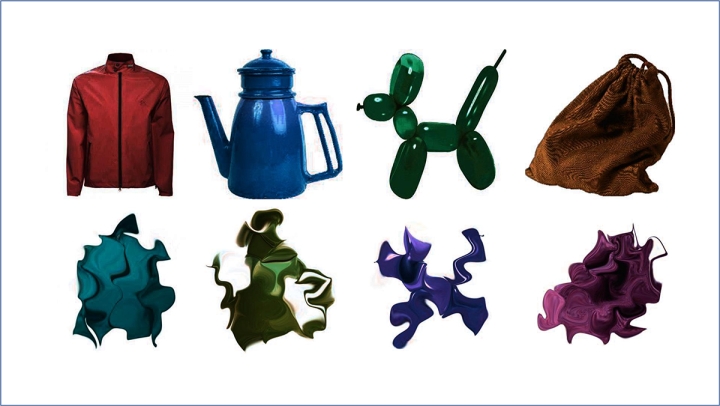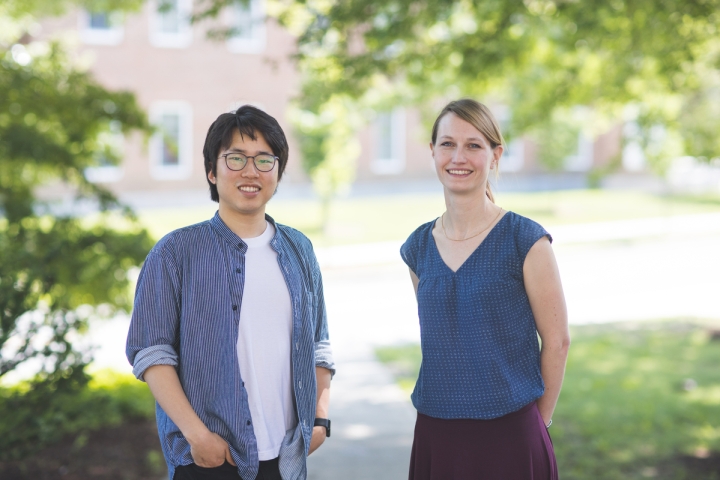Human memory is fundamental to everything we do. From remembering the faces of someone you just met to finding a cell phone that you just left on a table, “visual working memory”—the core cognitive system that retains visual information in an active state for a short period of time—plays a vital role.
Prior work has found that visual working memory capacity is well correlated with other important cognitive abilities such as academic performance and fluid intelligence, which includes general reasoning and problem solving, so understanding its limits is integral to understanding how human cognition works.
In the past, theories have proposed that an individual’s capacity for visual working memory is fixed, but a new Dartmouth-led study finds that more visual information can be retained when stimuli are meaningful, demonstrating that visual working memory capacity is flexible. The results are published in Psychological Science.
“Our findings broadly suggest that the capacity for visual working memory may be more continuous and flexible than we thought,” says lead author Yong Hoon Chung, a PhD student in cognitive neuroscience and member of the Perception, Attention, and Memory Laboratory at Dartmouth.
Through a series of five experiments, the researchers tested participants’ capacity for remembering the colors of recognizable real-world objects, such as a tea kettle, versus the colors of an unrecognizable version of the object.
The team used an algorithm developed by other researchers to convert the known object into a scrambled, abstract shape that is similar in visual complexity. The original objects and scrambled objects were then assigned random colors from a 360-degree color wheel. The idea was that earlier visual processing of the brain would be similar across both intact and scrambled objects, yet scrambled objects are unrecognizable by the observers. Thus, by scrambling the object, the meaningfulness of the stimuli is removed.

In one of the experiments, participants were presented with images of four different colored objects on a single computer screen and instructed to remember the colors as much as possible.
They were shown recognizable objects in the “meaningful” condition, and scrambled versions of the objects in the “meaningless” condition. Next, they were presented with a blank computer screen. Then, they viewed an image of one of the objects or scrambled versions of the objects in two different colors and were asked to identify which color they just saw. Participants were never asked about the identity of the object, only the color.
Participants were then presented with hundreds of objects, as well as scrambled objects, both in random colors, and were tested on their color memory.
The researchers calculated how well participants were able to remember the colors of the stimuli in the meaningful versus meaningless conditions.
“Our results show that participants’ memory for color was better when they had a meaningful context,” says Chung. “For example, people could remember the color blue better when it was part of a blue kettle than the scrambled blue shape of a jacket.”
“When colors are seen as part of something meaningful, you are more likely to remember that color,” says Chung.
The other experiments in the study were similar and served as controls to test if color memory is better with recognizable objects, which proved true across the study. The controls included using upside-down stimuli instead of scrambled objects, or adding a verbal task on top of the visual task to rule out the prospect that color memory of the stimuli was due to verbalizing what was seen or adding a spatial cue at retrieval.
“Prior research has shown that space is one of the strongest cues that our visual working memory system uses, as it is kind of baked in to our visual representations, so we were also interested in examining if the effect of meaningfulness would remain when participants could use spatial locations to retrieve the colors,” says senior author Viola Störmer, an assistant professor of psychological and brain sciences, and principal investigator of the Perception, Attention, and Memory Laboratory at Dartmouth.
“What we found is that participants continued to remember the colors better when they were part of real-world objects and didn’t only rely on the spatial locations of where the object was seen.”
“Our study demonstrates that this higher-level semantic meaning, which draws on the long-term storage of general knowledge or in this case the recognition of an object, can help make a really low-level feature that’s not meaningful by itself, like color, meaningful,” says Störmer. “When relatively abstract information is combined with conceptual knowledge that people already have, this can enhance one’s capacity to retain this new information better.”
According to the researchers, the results show that it may be time to rethink the methodologies that are used in clinical settings for testing deficits in memory, given that many of the measures rely on the assumption that working memory has a fixed capacity, potentially leading to inaccurate measure of human memory.
“Beyond the clinical setting, our findings may also have implications for how artificial intelligence systems model and manipulate human behavior, as working memory capacity is known to be related to general capacity of human cognition,” Chung says.
The research builds on Störmer’s earlier co-authored works, which have found that the ability to remember real-world objects is stronger than remembering abstract objects.
The team plans to investigate the underlying mechanisms of visual working memory using electroencephalogram, aka EEG, and functional magnetic resonance imaging technologies to better understand how the brain responds to the visual context of colors.
Timothy Brady at the University of California San Diego also served as a co-author of the study.


